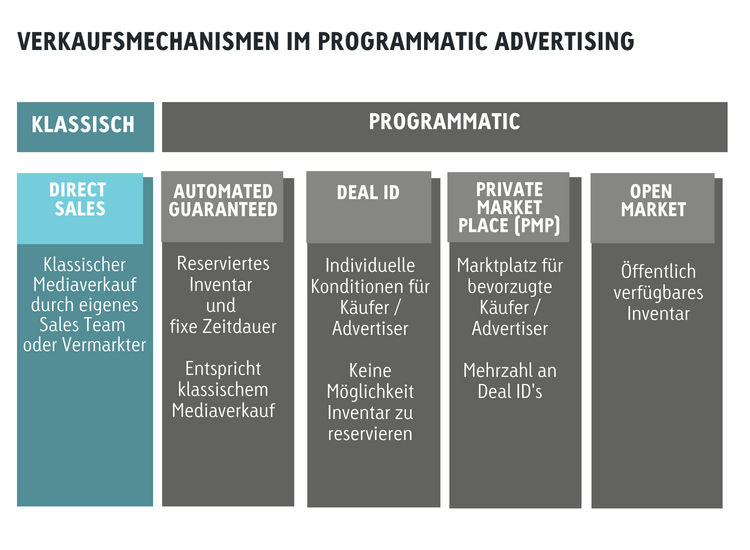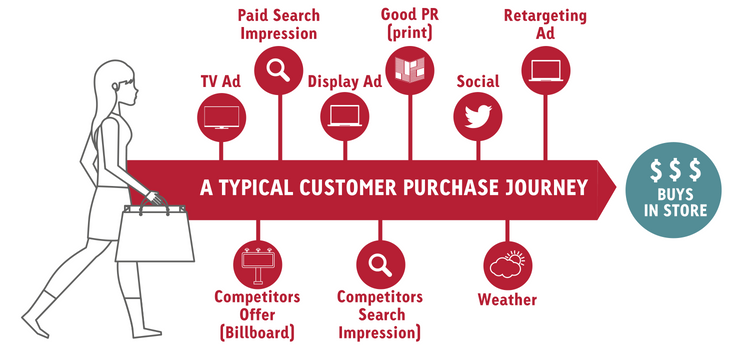Exploiting the potential of programmatic in the DACH market
Jochen Witte, Director Digital Transformation, Goldbach Group, on the untapped potential of programmatic advertising in the DACH market.

Programmatic advertising is on everyone's lips and, with a share of around 30 percent (Switzerland), 40 percent (Austria) and 60 percent (Germany) of the advertising market for display, video and mobile advertising, has long since ceased to be a developing topic. Experts estimate that by 2019, more than 70 percent of all budgets across Germany, Austria and Switzerland will be programmatic.
The reason for its success is the obvious benefits for advertisers, who are given potentially powerful tools to make advertising more efficient and effective through automation and data-based targeting of advertising. However, a look behind the numbers reveals that the reality often falls far short of the potential of Programmatic Advertising. For this there are following reasons:
1. programmatic advertising changes the market structure
Automation can only be achieved through technology. In the case of programmatic advertising, automation is realized through technical systems (SSP, DSP, DMP) that trade advertising in real time and on the basis of individual ad impressions. The technology required for this is complex and therefore expensive. Accordingly, technology players claim a significant share of advertising revenues. There is no general answer to the question of how high this share is. What is certain, however, is that traditional value chains can no longer function on a 1:1 basis in the automated world.
The DACH market in particular has had and continues to have to deal intensively with these changes. In this context, the caution of the German-speaking markets, often described as backward, has contributed to a critical examination of the dominance of technology providers, but has slowed down the process of adaptation. This is also the reason why intermediate stages of programmatic trading have been implemented in DACH markets, enabling a smooth migration of business models and processes. In the DACH markets, more than half of programmatic business is now traded via deals/PMPs.


2. technical and organizational hurdles
Even the most change-minded market players have to adapt their technologies, processes and, not least, their organization to the changing market conditions. Media planning and sales are changing and require new concepts and new know-how.
Despite these changes, some of which are profound, many market players are gradually beginning to really exploit the potential of these new technologies. Central themes are currently:
1. continuous optimization and "always on
While traditional media planning thinks in terms of campaigns and flights, programmatic advertising enables continuous market development. Campaigns no longer have a start and end date, but the advertising pressure is controlled and optimized as needed. Users can thus be guided individually through the customer journey in the sense of 1:1 marketing, and campaigns can be continuously optimized by means of A/B testing.
2. optimization for customer-specific KPIs and attribution
Probably one of the most central differences between classic media planning and programmatic advertising is that the measurement and evaluation of advertising measures can be carried out almost entirely by the customer or the agency. At least in theory, this makes it possible to measure and evaluate individual ad impressions according to customer-specific KPIs.
3. marketing individualization
The use of data not only makes it possible to avoid wastage, but also to individualize communication with the user. Technologies such as Dynamic Creative Optimization (DCO) make it possible to automatically adapt the creation to the respective user and thus make advertising more relevant and useful.
What next?
It can be assumed that increasing dynamization and individualization will have a drastic effect on how advertising is traded in the future. The share of OpenRTB, i.e., trading based on a bidding process, will increase significantly.
Nevertheless, there are also question marks regarding the further development of automated trading of advertising. At the latest with the new DSGVO and the increasing consolidation of the online advertising market in the direction of the large American platforms, new doubts, conflicts of interest and discussions arise.
A key issue here is cross-device and cross-platform ID management - the identification of individual users across multiple providers and devices. Potentially, this is the great strength of online technologies and the core differentiation from classic media and the various initiatives to build programmatic booking platforms for classic media such as TV, radio, or DOOH. The customer desire and benefit is obvious: the cross-media optimization of advertising based on individuals. To get closer to this goal, Goldbach, for example, is investing in technologies that bring classic advertising bookings closer to the programmatic technologies used online.

Differences between programmatic online and programmatic in traditional media
The key difference between Programmatic Online and Programmatic in traditional media is the underlying database, the delivery granularity and the real-time capabilities of the scheduling systems.

New measurement methods and progressive automation between booking and delivery systems based on the OpenRTB protocol known from online already offer some optimization possibilities for DOOH advertising. For example, it is possible for customers to exchange advertising media subjects within an hour or to optimize campaigns based on sales data in the vicinity of screens. It is also possible to synchronize online (mobile) and DOOH advertising.
However, the available reach for programmatically bookable DOOH screens is still comparatively small. DOOH DSPs like Splicky are aiming to cover the entire market, but currently still have coverage of less than 50 percent. The market is only at the beginning here. In the standardization of OpenRTB protocol extensions for 1:many media, initiatives such as the Digital Media Institute (Dmi-org.com) are working to create common market standards that will enable broader coverage of programmatically bookable screens.
We are only at the beginning of a fundamental change in marketing. Brands get faster, easier and more individual feedback on who their customers are and what they expect from the brand. On the other hand, advertising is becoming more individual, more interactive and more useful for the user. Be it online or in traditional media such as DOOH, TV or radio.
Author: Jochen Witte, Director Digital Transformation, Goldbach Group








